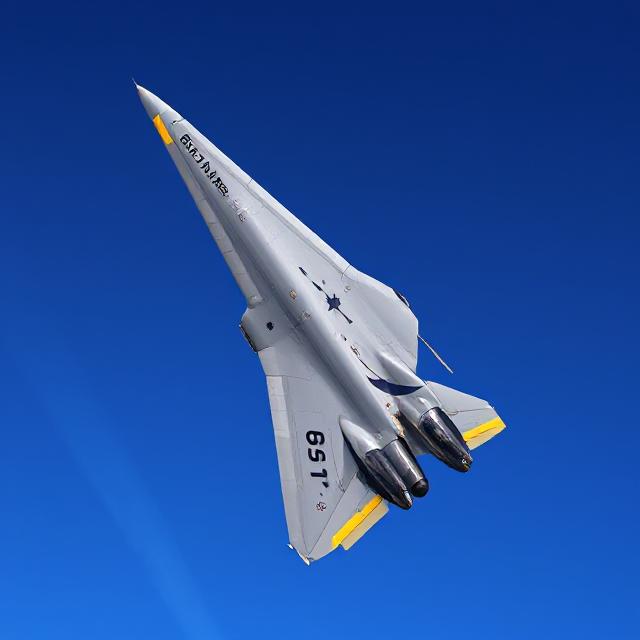Tejas Mk1A: India’s Game-Changing Light Combat Aircraft Ready for 2025 Deployment
Is the Tejas Mk1A Ready for Combat Operations?
The Tejas Mk1A light combat aircraft represents a significant milestone in India’s defense manufacturing capabilities, with HAL poised to deliver the first Tejas Mk-1A fighter jet from its new production facility in Nashik by the end of June 2025. This advanced variant of the indigenous LCA Tejas program showcases over 65% indigenous content, involving more than 500 Indian companies in its production chain.
The readiness status of the Tejas Mk1A has been a subject of intense focus for defense enthusiasts and military strategists alike. At least 12 single-seater Tejas Mk1A aircraft will be delivered to the IAF by March 2026, marking the transition from development to operational deployment. The aircraft has undergone extensive testing and validation, with over 70% indigenous content, state-of-the-art avionics, electronic warfare systems, and an AESA radar, positioning it among the most capable 4.5-generation fighter aircraft globally.
However, engine supply remains a critical factor affecting delivery timelines. HAL expects to get 12 F404s this year, allowing the delivery of 12 single-engine Tejas Mk1As in the current financial year, highlighting the dependency on General Electric for propulsion systems. Despite these challenges, the aircraft has demonstrated its combat readiness through comprehensive flight testing and weapons integration trials.
The indigenous light combat aircraft program has achieved several technological breakthroughs, including mastery of fly-by-wire flight control systems, carbon-fiber composite manufacturing, and modern glass cockpit integration. These achievements position the Tejas Mk1A as a formidable addition to the Indian Air Force’s fleet, capable of multi-role operations in contemporary warfare scenarios.
How Many Tejas Mk1A Aircraft Does India Currently Possess?
Understanding the current inventory and production pipeline of the Tejas Mk1A light combat aircraft requires examining both completed aircraft and production commitments. HAL has completed the production of nine Tejas Trainer aircraft, bringing the total number of completed Tejas aircraft (single-seater and trainers) to 19.
The production landscape for the hal tejas aircraft involves multiple orders and delivery schedules. The initial order comprises 73 Tejas Mk1A single-seater variants and 10 trainers, with production ramping up at HAL’s facilities in Bangalore and the new Nashik manufacturing line. The Government approved the procurement of 73 Tejas Mk1A and 10 Trainers at a cost of ₹45,696 crore (~US$6 billion).
Looking ahead, HAL-IAF Set to Finalize Deal for 97 More Tejas Mk1A Jets; Deliveries from 2028 to 2031, bringing the total commitment to 170 aircraft. This expanded order demonstrates the Indian Air Force’s confidence in the lca tejas platform and its operational capabilities.
The production capacity expansion is crucial for meeting delivery timelines. HAL is already expanding its production capacity to manufacture 24 Tejas jets per year, which will be crucial in delivering 170 fighters within the decade. This production rate represents a significant increase from previous manufacturing capabilities and reflects HAL’s commitment to meeting military requirements.
Current inventory includes operational Tejas Mk1 variants already in service with the Indian Air Force, providing valuable operational experience that has informed improvements in the Mk1A variant. The transition from Mk1 to Mk1A represents an evolutionary upgrade rather than a completely new aircraft, leveraging existing infrastructure and expertise.
What Are the Key Differences Between Tejas Mk1 and Mk1A Variants?
The evolution from Tejas Mk1 to the Mk1A variant represents a comprehensive upgrade addressing operational feedback and incorporating advanced technologies. It features upgraded avionics, an AESA radar, electronic warfare systems, and mid-air refueling capability, transforming the light combat aircraft into a more capable multi-role platform.
Advanced Radar and Sensor Systems
The most significant upgrade in the Tejas Mk1A involves radar technology. While the original Mk1 used the Israeli Elta EL/M-2032 multi-mode pulse-Doppler radar, the Mk1A incorporates the more advanced EL/M-2052 Active Electronically Scanned Array (AESA) radar. This upgrade provides enhanced target detection, tracking capabilities, and electronic warfare resistance.
The AESA radar system offers multiple advantages including simultaneous air-to-air and air-to-ground modes, improved jamming resistance, and reduced radar cross-section due to low probability of intercept characteristics. These capabilities significantly enhance the aircraft’s survivability in contested airspace environments.
Electronic Warfare and Defensive Systems
Electronic warfare capabilities represent another major advancement in the Mk1A variant. The aircraft features an integrated electronic warfare suite providing comprehensive threat detection, identification, and countermeasure capabilities. This system includes radar warning receivers, electronic countermeasures, and chaff/flare dispensers for enhanced survivability.
The defensive systems integration extends beyond passive measures to include active jamming capabilities, giving pilots additional tools for mission success in high-threat environments. These systems work in conjunction with the AESA radar to provide a comprehensive defensive umbrella around the aircraft.
Avionics and Cockpit Enhancements
43 Improvements across Avionics, Weapons & Maintenance characterize the Mk1A upgrade program. The avionics suite includes modern mission computers, upgraded displays, and enhanced navigation systems. The glass cockpit features larger multi-function displays with improved graphics and processing capabilities.
Communication systems have been upgraded to support modern data link protocols, enabling better integration with command and control networks. These improvements enhance situational awareness and support network-centric warfare concepts increasingly important in modern military operations.
Structural and Aerodynamic Improvements
The new Mk1A will feature better composites to reduce the airframe weight and an increased number of aerodynamic pylons to reduce the supersonic drag. These structural improvements address performance limitations identified in the original Mk1 variant.
There are some visible changes such as increased size of auxiliary air intake for better airflow and placements of external antennas. These modifications improve engine performance and reduce electromagnetic interference between various onboard systems.
Weapons Integration and Capability
The Mk1A variant features enhanced weapons integration capabilities supporting a broader range of munitions. The aircraft can carry Beyond Visual Range (BVR) missiles, precision-guided munitions, and various air-to-ground ordnance. The improved fire control system provides better weapons delivery accuracy and multi-target engagement capabilities.
Mid-air refueling capability represents a crucial operational enhancement, significantly extending the aircraft’s range and endurance. This capability enables long-range missions and provides greater operational flexibility for the Indian Air Force.
Manufacturing Excellence: HAL’s Indigenous Production Capabilities
The Tejas Mk1A light combat aircraft program exemplifies India’s growing aerospace manufacturing capabilities through HAL’s comprehensive production infrastructure. The program’s success stems from integrating over 500 Indian companies into the supply chain, creating a robust ecosystem for defense manufacturing.
Nashik Production Facility: A New Chapter
The establishment of HAL’s new production facility in Nashik represents a significant expansion of India’s fighter aircraft manufacturing capacity. This facility incorporates modern production techniques, automated assembly systems, and quality control processes meeting international aerospace standards. The Nashik line specifically focuses on Mk1A production, enabling dedicated manufacturing workflows optimized for this advanced variant.
The facility’s design emphasizes efficiency and scalability, supporting the planned production rate of 24 aircraft annually. This production capacity represents a substantial increase from earlier manufacturing capabilities and demonstrates HAL’s commitment to meeting delivery timelines for both current and future orders.
Supply Chain Integration and Indigenous Content
With over 65% indigenous content, the Tejas Mk1A program has successfully developed a comprehensive domestic supply chain. This achievement involves complex coordination between HAL and hundreds of Indian companies, ranging from large industrial organizations to specialized component manufacturers.
On 30 May 2025, the first centre fuselage assembly for the Tejas Mk1A was handed over to HAL by subcontractor VEM Technologies in Hyderabad, demonstrating the distributed manufacturing approach adopted for the program. This strategy not only supports indigenous development but also creates employment opportunities and technology transfer throughout the Indian aerospace sector.
The indigenous content achievement extends beyond simple component manufacturing to include complex systems integration, software development, and advanced materials processing. These capabilities represent significant technological advancement for India’s defense industrial base.
Quality Assurance and Testing Protocols
HAL has implemented comprehensive quality assurance protocols throughout the Tejas Mk1A production process. These protocols include rigorous testing at component, sub-system, and system levels, ensuring that each aircraft meets stringent military specifications.
The testing regimen encompasses structural integrity verification, avionics functionality validation, and comprehensive flight testing programs. Each aircraft undergoes extensive ground testing before first flight, followed by comprehensive flight test programs validating all operational capabilities.
Engine Challenges and Supply Chain Dependencies
The Tejas Mk1A light combat aircraft program faces ongoing challenges related to engine supply, highlighting the complexities of international defense cooperation and supply chain management. The aircraft utilizes the General Electric F404-GE-IN20 engine, creating dependency on American technology and export controls.
Current Engine Supply Status
HAL Chairman cum Managing Director DK Sunil said the first engine would arrive by March and the US major promised supplying 12 such engines in this calendar year. This supply schedule directly impacts aircraft delivery timelines and operational readiness of the Indian Air Force.
The engine supply bottleneck represents a critical constraint on production ramp-up efforts. Despite HAL’s manufacturing readiness and aircraft completion, final delivery depends on engine availability from General Electric. This situation underscores the importance of developing indigenous engine capabilities for future aircraft programs.
Strategic Implications of Engine Dependency
The reliance on imported engines creates strategic vulnerabilities for India’s defense capabilities. Export controls, political considerations, and supply chain disruptions can potentially impact operational readiness and military planning. This dependency has driven increased focus on indigenous engine development programs.
The experience with F404 engine supplies has informed planning for future programs, including the tejas mk2 and amca initiatives. These programs incorporate lessons learned regarding supply chain resilience and the importance of indigenous propulsion technology development.
Future Engine Solutions
India’s defense establishment recognizes the critical importance of indigenous engine development for achieving true strategic autonomy in fighter aircraft programs. The Kaveri engine program, despite past challenges, continues as a long-term solution for reducing import dependencies.
For immediate requirements, the focus remains on ensuring reliable F404 supplies while simultaneously developing indigenous alternatives. This dual approach balances operational needs with strategic objectives for defense technology independence.
Advanced Technology Integration in the Tejas Mk1A
The Tejas Mk1A light combat aircraft incorporates numerous advanced technologies that position it among the most capable 4.5-generation fighters globally. These technological achievements represent significant advances in India’s aerospace capabilities and demonstrate successful integration of indigenous and international systems.
Fly-by-Wire Flight Control System
The aircraft features a sophisticated fly-by-wire flight control system developed indigenously, representing a major technological achievement. This system provides enhanced aircraft stability, improved handling characteristics, and advanced flight envelope protection. The digital flight control system enables the aircraft to achieve performance characteristics impossible with conventional control systems.
The fly-by-wire system integration required extensive software development, control law validation, and flight testing programs. This achievement has established India’s capabilities in critical flight control technologies, providing a foundation for future aircraft programs including the tejas mk2 and amca projects.
Composite Materials and Manufacturing
Extensive use of carbon-fiber composite materials in the Tejas Mk1A demonstrates advanced manufacturing capabilities developed through the LCA program. These materials provide weight savings, improved structural integrity, and enhanced durability compared to traditional aluminum construction.
The composite manufacturing processes developed for the hal tejas aircraft have broader applications across India’s aerospace industry. The expertise gained through this program supports other indigenous aircraft development initiatives and contributes to India’s growing aerospace manufacturing ecosystem.
Modern Avionics Architecture
The Mk1A features a modern avionics architecture based on open systems standards, enabling future upgrades and technology insertion. This approach provides flexibility for incorporating new capabilities as they become available while maintaining compatibility with existing systems.
The avionics suite includes advanced mission computers, integrated displays, and comprehensive sensor fusion capabilities. These systems work together to provide pilots with unprecedented situational awareness and mission effectiveness in complex operational environments.
Operational Capabilities and Combat Roles
The Tejas Mk1A light combat aircraft has been designed as a multi-role platform capable of performing diverse missions across the entire spectrum of air operations. Its operational capabilities span air-to-air combat, ground attack missions, reconnaissance operations, and air defense roles.
Air-to-Air Combat Capabilities
In air-to-air configuration, the Mk1A can engage multiple targets simultaneously using its AESA radar and advanced missile systems. The aircraft supports Beyond Visual Range (BVR) engagement capabilities through integration with modern air-to-air missiles, providing standoff attack capabilities against aerial threats.
Close-in combat capabilities include integration with short-range air-to-air missiles and a 23mm cannon for gun engagements. The aircraft’s agility and advanced flight control systems provide excellent maneuverability characteristics essential for air combat missions.
Ground Attack and Close Air Support
The Tejas Mk1A’s upgraded radar and targeting systems enable more accurate and successful combat-assistance missions. The aircraft can deliver precision-guided munitions against ground targets with high accuracy, supporting close air support and battlefield interdiction missions.
The multi-mode radar provides ground mapping and target designation capabilities, while advanced navigation systems enable precise weapons delivery in all weather conditions. These capabilities make the Mk1A an effective platform for supporting ground operations and conducting strategic strikes.
Reconnaissance and Surveillance Operations
The aircraft’s sensor suite and data link capabilities support reconnaissance and surveillance missions. High-resolution sensors can collect intelligence on enemy positions, activities, and movements, providing valuable information for military planning and operations.
Real-time data transmission capabilities enable immediate sharing of intelligence with command centers and other platforms, supporting network-centric warfare concepts increasingly important in modern military operations.
Future Developments: Tejas Mk2 and AMCA Programs
The success of the Tejas Mk1A light combat aircraft program provides a foundation for India’s next-generation fighter aircraft initiatives, including the tejas mk2 and amca programs. These future developments represent the evolution of India’s aerospace capabilities and strategic objectives for defense technology independence.
Tejas Mk2: The Next Evolution
The HAL Tejas Mark 2, or Medium Weight Fighter (MWF), is an Indian 4.5 generation, single-engine, canard delta wing, multirole combat aircraft designed by the Aeronautical Development Agency (ADA) in collaboration with Aircraft Research and Design Centre (ARDC) of Hindustan Aeronautics Limited (HAL) for the Indian Air Force (IAF).
The tejas mk2 represents a significant evolution from the Mk1A, featuring an elongated airframe, close-coupled canards, and more powerful engines. The roll-out of the first prototype is expected by 2025, first flight within 2026 and mass production by 2029.
MK2 will use GE414 (which powers F/A — 18), providing significantly more thrust than the F404 engines used in the Mk1A. This increased power enables higher payload capacity, improved performance characteristics, and enhanced operational capabilities.
AMCA: India’s Stealth Fighter Program
The Advanced Medium Combat Aircraft (amca) represents India’s entry into fifth-generation stealth fighter development. AMCA will be a Medium Weight but Stealth aircraft, incorporating low-observable technologies and advanced sensor systems.
The amca program builds upon technologies and expertise developed through the LCA Tejas initiatives while incorporating next-generation capabilities including stealth characteristics, advanced sensor fusion, and network-centric warfare capabilities. This program represents India’s commitment to maintaining technological parity with global aerospace powers.
Technology Transfer and Industrial Development
These future programs continue the philosophy of indigenous development established through the lca tejas program. The emphasis remains on maximizing indigenous content, developing domestic supply chains, and building India’s aerospace industrial capabilities.
The progression from Mk1A to Mk2 to AMCA demonstrates a systematic approach to capability development, with each program building upon previous achievements while incorporating new technologies and operational requirements.
Economic Impact and Industrial Growth
The Tejas Mk1A light combat aircraft program generates significant economic benefits beyond its immediate military applications. The program’s industrial ecosystem creates employment opportunities, drives technology development, and contributes to India’s economic growth through defense manufacturing.
Employment Generation Across Industries
With over 500 Indian companies participating in the supply chain, the program creates direct and indirect employment across multiple sectors. These opportunities range from high-skilled aerospace engineering positions to manufacturing jobs in component production facilities.
The distributed nature of the supply chain ensures that economic benefits reach different regions of India, supporting local economic development and industrial growth. This approach aligns with government objectives for balanced regional development through defense manufacturing initiatives.
Technology Development and Innovation
The program drives significant investment in research and development across participating companies. These R&D efforts result in technological advances applicable beyond the immediate aircraft program, creating spillover benefits for India’s broader industrial sector.
Innovation in materials science, manufacturing processes, avionics systems, and quality control procedures developed for the Tejas program finds applications in civilian aerospace, automotive, and other high-technology industries.
Export Potential and International Markets
The Tejas Mk1A’s advanced capabilities and competitive pricing position it as a potential export product for countries seeking modern fighter aircraft. Successful international sales would generate foreign exchange earnings while demonstrating India’s aerospace manufacturing capabilities globally.
Export success would also support larger production runs, reducing unit costs and improving economies of scale for domestic procurement. This virtuous cycle strengthens the program’s financial sustainability and industrial viability.
Challenges and Lessons Learned
The Tejas Mk1A light combat aircraft program has faced various challenges that provide valuable lessons for future defense development initiatives. Understanding these challenges and their solutions contributes to improved program management and technological development capabilities.
Program Management and Timeline Adherence
Complex aerospace programs like the hal tejas aircraft face inherent challenges in maintaining development schedules while meeting technical requirements. The program has experienced delays related to engine supplies, technology integration challenges, and evolving operational requirements.
These experiences have informed improved program management practices, including better supply chain risk management, more realistic timeline planning, and enhanced coordination between multiple stakeholders involved in complex defense programs.
Technology Integration Complexities
Integrating advanced technologies from multiple sources while maintaining system compatibility presents ongoing challenges. The Mk1A program required extensive testing and validation to ensure proper integration of indigenous and imported systems.
Success in overcoming these integration challenges has established India’s capabilities in systems engineering and complex program management, providing valuable expertise for future aircraft development initiatives.
Supply Chain Resilience
The engine supply challenges highlight the importance of supply chain resilience in defense programs. Dependencies on international suppliers create vulnerabilities that require careful management and mitigation strategies.
Lessons learned from these experiences inform planning for future programs, emphasizing the importance of indigenous alternatives and diversified supply sources for critical components.
Global Context and International Comparisons
The Tejas Mk1A light combat aircraft operates within a competitive global market for modern fighter aircraft. Understanding its capabilities relative to international alternatives provides perspective on its technological achievements and market positioning.
Capability Comparison with International Fighters
The Mk1A’s 4.5-generation capabilities place it in competition with aircraft like the JF-17 Thunder, FA-50 Golden Eagle, and various upgraded versions of older fighter designs. Its AESA radar, electronic warfare systems, and modern avionics provide competitive advantages in many operational scenarios.
The aircraft’s indigenous content percentage exceeds most international programs, demonstrating India’s commitment to technological independence while maintaining competitive capabilities. This achievement positions India among a select group of nations with comprehensive fighter aircraft development capabilities.
Cost Effectiveness and Value Proposition
The Tejas Mk1A offers significant cost advantages compared to imported alternatives while providing modern capabilities required for contemporary air operations. This cost-effectiveness makes it attractive for the Indian Air Force while potentially appealing to international customers with similar requirements.
Life-cycle cost considerations favor the Mk1A due to indigenous support capabilities, reduced dependence on foreign suppliers for maintenance, and established domestic support infrastructure.
Strategic Implications for Defense Relationships
The program’s success enhances India’s position in international defense relationships by demonstrating indigenous capabilities and reducing dependence on traditional suppliers. This technological independence provides greater flexibility in foreign policy and defense cooperation initiatives.
Success in the lca tejas program establishes India as a credible partner for international aerospace cooperation, potentially leading to collaborative development programs and technology sharing agreements with other nations.
Future Outlook and Strategic Vision
The Tejas Mk1A light combat aircraft program represents more than just a military procurement initiative; it embodies India’s strategic vision for defense technology independence and aerospace industrial development. The program’s future trajectory will significantly influence India’s position in global aerospace markets and defense capabilities.
Production Scaling and Industrial Maturity
HAL to supply 180 LCA Tejas Mk1A by 2031-32 represents a significant production commitment requiring continued industrial development and capacity expansion. Achieving this production target will demonstrate India’s maturity as an aerospace manufacturing nation.
The scaling of production capabilities supports broader objectives for defense industrial development while creating the foundation for export opportunities and international cooperation programs.
Technology Evolution and Upgrade Pathways
The Mk1A platform provides a foundation for continuous technology evolution and capability enhancement. Planned upgrades and technology insertion opportunities ensure the aircraft remains relevant throughout its operational life cycle.
Future upgrade programs will incorporate lessons learned from operational experience while integrating new technologies as they become available. This evolution approach maximizes the value of initial development investments while maintaining competitive capabilities.
International Cooperation and Market Development
Success with the Tejas Mk1A creates opportunities for international cooperation in future aerospace programs. India’s demonstrated capabilities attract potential partners seeking collaborative development arrangements and technology sharing initiatives.
Export market development remains a key objective, with several countries expressing interest in the aircraft’s capabilities and cost-effectiveness. International sales success would validate the program’s achievements while generating resources for future development initiatives.
Conclusion: The Tejas Mk1A’s Role in India’s Aerospace Future
The Tejas Mk1A light combat aircraft represents a watershed moment in India’s aerospace development journey, demonstrating the nation’s capability to design, develop, and manufacture advanced military aircraft. With deliveries set to begin by June 2025 from HAL’s Nashik facility, the program transitions from development achievement to operational reality.
The aircraft’s advanced capabilities, including AESA radar, electronic warfare systems, and multi-role versatility, position it as a credible addition to the Indian Air Force’s fleet. More importantly, the program’s success creates a foundation for India’s future aerospace ambitions, including the tejas mk2 and amca programs.
The economic and industrial benefits extend far beyond the immediate military applications, creating employment opportunities, driving technology development, and establishing India’s position in global aerospace markets. With over 500 companies participating in the supply chain and 65% indigenous content, the program demonstrates the viability of India’s Make in India initiative in complex, high-technology sectors.
As 12 single-seater Tejas Mk1A aircraft will be delivered to the IAF by March 2026, the program enters its operational phase with confidence in its technological achievements and industrial capabilities. The success of the Tejas Mk1A light combat aircraft program establishes India as a credible player in global aerospace markets while providing the foundation for continued advancement in defense technology and industrial capabilities.
The journey from concept to operational deployment represents more than technological achievement; it embodies India’s strategic vision for defense independence and technological sovereignty. As the program moves forward with production and delivery, it creates a legacy that will influence India’s aerospace development for decades to come, establishing the foundation for continued growth in this critical sector of national security and industrial capability.











